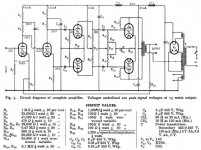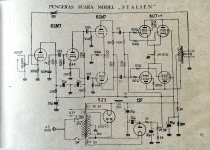It has been a while since I have dealt with tube amplifiers, so I have forgotten a bit.
I am trying to build a Williamson amplifier, using 2 x 2 - 807s for the output stage.
How do I decide what output transformer is needed, using the tech data of the 807 beam power tetrode?
I am trying to build a Williamson amplifier, using 2 x 2 - 807s for the output stage.
How do I decide what output transformer is needed, using the tech data of the 807 beam power tetrode?
The best way is to trace the loadline in the graph, and choose the best operating conditions for the tubes.
Not guitar amp - Hi fi amp.
I was going to build another completely different amp, but the technician that I went to see about it, noticed big capacitive coupling issues.
He then recommended the Williamson amp, but I wanted to boost up the power rating a bit.
I was going to build another completely different amp, but the technician that I went to see about it, noticed big capacitive coupling issues.
He then recommended the Williamson amp, but I wanted to boost up the power rating a bit.
You should be in this forum then.
https://www.diyaudio.com/forums/tubes-valves/
See if the moderator can switch you around.
https://www.diyaudio.com/forums/tubes-valves/
See if the moderator can switch you around.
Read the Source:
http://www.r-type.org/pdfs/dtnw-amp.pdf
Williamson designed for 10kCT loading, big power tubes triode-wired. 807 is not that different load-wise than KT66. Different supply voltage has significant effect on best loading.
There are dozens of variations. Each will lead to different optimum.
http://www.r-type.org/pdfs/dtnw-amp.pdf
Williamson designed for 10kCT loading, big power tubes triode-wired. 807 is not that different load-wise than KT66. Different supply voltage has significant effect on best loading.
There are dozens of variations. Each will lead to different optimum.
Do not try to pull a new circuit out of the blue, specially if rusty on tube amps.
Either follow your Tech´s suggestion literally, i.e. build a Williamson amp "by the book" or find another circuit that suits your needs and build it.
Either follow your Tech´s suggestion literally, i.e. build a Williamson amp "by the book" or find another circuit that suits your needs and build it.
Read the Source:
http://www.r-type.org/pdfs/dtnw-amp.pdf
Williamson designed for 10kCT loading, big power tubes triode-wired. 807 is not that different load-wise than KT66.
Yes and if you care to look carefully you will notice the maximum allowed screen voltage on 807 is 300V absolute MAX.
Certain by no means all 807s will manage 400V if connected as triodes.
Running them at 450V like in the designs shown will result in almost immediate 100% destruction of the screen grid.
Williamson did lots of really stupid things with his amp, most of which are by now well known.
He could only get away with them because of the helpful cooperation with Partridge who made components of quality only matched by UTC LS, which all cost an arm and a leg.
DTNW did finally have to admit running push-pull triodes as an answer at such tremendously high A-A impedances was a really dumb idea, which is why he eventually advocated beam-tetrode operation, when he realised 15W was a road to nowhere.
Thank you 6vheater.
I do remember a radio tradesperson telling me that the 807 did operate better as a beam power tetrode. I would imagine then, I'd need a ultra linear OT.
I am an electrician of many years now, so my knowledge of a lot of this stuff has gone rusty a bit.
So if you could help me out, would the ULOT still have to be 10k p-p?
I do remember a radio tradesperson telling me that the 807 did operate better as a beam power tetrode. I would imagine then, I'd need a ultra linear OT.
I am an electrician of many years now, so my knowledge of a lot of this stuff has gone rusty a bit.
So if you could help me out, would the ULOT still have to be 10k p-p?
That is a 100% load of codswallop.Yes and if you care to look carefully you will notice the maximum allowed screen voltage on 807 is 300V absolute MAX.
Certain by no means all 807s will manage 400V if connected as triodes.
Running them at 450V like in the designs shown will result in almost immediate 100% destruction of the screen grid.
Radiotronics reassessed the 807 screen voltage rating as suitable for 400V triode use after substantial factory testing - as a consequence of them wanting to assure customers that the 807 was suitable for use in the Williamson circuit. That was done in 1947-8, so well before 'others' went about modifying the Williamson circuit to use 807's.
The triode in the Williamson circuit has a working voltage of 400V idle, not 450V.
Oh wow, some ozzy has got such a bee in his bonnet after criticising his favourite 1940s design he's determined to put me right,- right across the new year into 2020..codswallop.
Funny isn't it, this persistance about the 807, which as it happens exists in at least half a dozen variants.
Actually I don't really give a toss what some Radiotronics guff wrote 70yrs ago.
I work with 807s I have & tested, not some imaginary wonderful all singing all dancing down under version which probably never exists.
I am also concerned my amps stays stable under all conditions which nobody in a hi end shop will be testing them for, but who know may want to run into an ESL?
There's a lot of difference between what you meet in real world, test / reject and all the manualitis and the silly crap that's written on forums.
I have to say having tested a load of 807s, that the production spread is enormous, and they certainly don't meet spec.
I had loads of them, which is why I chose to use the KT8 which has a much larger cathode.
Another forum member has confirmed the same story having had 100s of them.
The sensible choice is to use 807s in legacy museum amps that are big enough to accept them, and do nice upgrades and restorations on them.
The grey plate 807s will certainly never run as triodes,- they are the first to start to red plate in the anode corners at 17W.
The black shiny anode ones seem to fair better, but oscillation has always been an issue especially if you wind up the g2 voltage.
A few had 6L6GC guts stuffed in them.
90% most of them certainly won't manage 25W without glowing all over red, and once you start doing high power testing would melt the screens as soon as you start doing 1khz square wave stuff.
The only good reliable ones here really are the French Thompson 5933W, but someone else told me that some time ago, not tried to convince me of the impossible.
I tested all I had until I could get acceptable matched pair reliability from just TWO PAIRS, and that running with a fully regulated screen at 300V.
Believe what you like, quote me as much junk science about that Williamson "genius" as you like.
Don't even start me on the KT66 nutters, selling a quad of them for 1000USD+, when you can get the STC 5Bxxx for less than 35USD for a quad.
Fact is,- the 807 is low sensitivity 1930s old hat.
You will have to go through 100s of them to find that "6L6GC" version, which occasionally was stuffed into that bottle, and even the TV version with octal base / made by the Russians are known to have production issues.
It's also well known the 807 only becomes really linear when you push the anode voltage well past 500V.
As they approach 600-800V they start working so much better, but hey you probably don't know that's what people used them for successfully, usually in AB2, choke or transformer coupled or cathode follower driven.
Millett's amp is a last throw of the dice for someone who really wants to go that route. Just buy the bits on EBAY and build it.
Forget DTN's unstable old thingy.
The other 807s I tested are uniquely unsuitable to both triode use as well as ultralinear for the many reasons I won't bother to repeat.
Only people with some sort of desire to recreate weird unstable odd ball 1940s stuff with top cap valves that the time were being thrown out of JAN stores for free would dream of using them for new amplifiers today in a mode where they don't make any power.
I don't mind the Ozzies being cheap skates in 1949, but with the enormous progress that happened in the 1960s, especially if you like, when the British made the tiny 5B254M, insisting on doing stuff that old way is tantamount to the grossest stupidity. 🙄
here is what Peter Millett writes:-
(go and argue with him, and tell him he is doing it all wrong)
He is using his own well known universal PP driver board , the 254M valves are run in parallel push pull with a A-A load of 4k3.I used the screen grid taps to provide local feedback to the driver. They DO NOT go to the screen grids of the tubes... though if you want to do ultralinear connection, you certainly can try it - but not with an 807, whch has a maximum screen voltage of 300V.
He doesn't use the "willy" design, but a modern CCS based phase invertor.
What's not to like?
To quote him,-
Onset of clipping is around 40 watts.
Frequency response at 10W into 8 ohms. -3dB are at <10Hz and ~55kHz.
Go and tell him he's doing it all wrong.
I can't be bothered with this any more.
"807" Push-Pull amp
Last edited:
If only you were just criticising/commenting. Sadly you sometimes put out plain incorrect facts - on this forum incorrect facts get called out. Often it seems to be because you don't appreciate the technical detail, like rating an 807 for strapped triode use at 400V, versus UL operation.
My plain "incorrect" facts... (you heard of the word Pendantry, usually applies to 70yr old fogeys).
When you can do better, prove it.
Notice the linearity of the square wave trace at 70W, the input from the centre tapped choke feed, which of course people claimed can't work, followed by the output trace from the output transformer which people also claimed can't work... (can't possibly be a quality transformer can it!).
I always test amps at FULL power, where they have to demonstrate their ability not to blow up or show horrible distortion in any frequency band.
I get a bit annoyed by people who constantly claim they know better but ain't done it, they read the book, but don't see the video, hear the audio or go there... armchair enthusiasts as usual.
I'm listening to a sound recording from the engineer of our major opera house this morning for commentary & audit.
I have neither time nor patience for the kind of theoretical "incorrect facts" nonsense you term "calling out" on this forum.
There's an expression something to do with "Grandmother" & "sucking eggs"
Learn it. 😡
When you can do better, prove it.
Notice the linearity of the square wave trace at 70W, the input from the centre tapped choke feed, which of course people claimed can't work, followed by the output trace from the output transformer which people also claimed can't work... (can't possibly be a quality transformer can it!).
I always test amps at FULL power, where they have to demonstrate their ability not to blow up or show horrible distortion in any frequency band.
I get a bit annoyed by people who constantly claim they know better but ain't done it, they read the book, but don't see the video, hear the audio or go there... armchair enthusiasts as usual.
I'm listening to a sound recording from the engineer of our major opera house this morning for commentary & audit.
I have neither time nor patience for the kind of theoretical "incorrect facts" nonsense you term "calling out" on this forum.
There's an expression something to do with "Grandmother" & "sucking eggs"
Learn it. 😡
Attachments
-
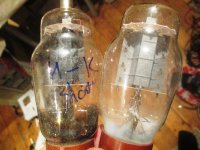 6L6GC_v_807.jpg168.7 KB · Views: 298
6L6GC_v_807.jpg168.7 KB · Views: 298 -
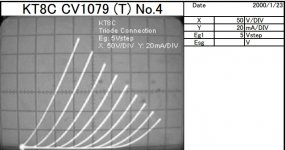 kt8_tet_samples_tri3.jpg90.3 KB · Views: 309
kt8_tet_samples_tri3.jpg90.3 KB · Views: 309 -
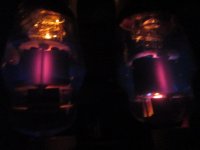 flat_out_square_wave.jpg89.1 KB · Views: 296
flat_out_square_wave.jpg89.1 KB · Views: 296 -
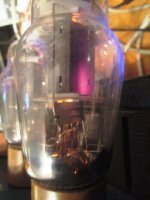 beastie_937.jpg67.7 KB · Views: 306
beastie_937.jpg67.7 KB · Views: 306 -
 mmmm_nice_807.jpg41.4 KB · Views: 255
mmmm_nice_807.jpg41.4 KB · Views: 255 -
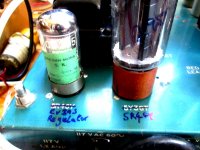 fun_with BBC_reg_valve939.jpg166.4 KB · Views: 109
fun_with BBC_reg_valve939.jpg166.4 KB · Views: 109 -
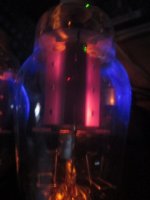 807_torture_test_16_april.jpg52.3 KB · Views: 109
807_torture_test_16_april.jpg52.3 KB · Views: 109 -
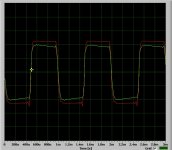 square_wave_1khz_85W_final.jpg97 KB · Views: 101
square_wave_1khz_85W_final.jpg97 KB · Views: 101 -
 1khz_sine_final.jpg81.4 KB · Views: 99
1khz_sine_final.jpg81.4 KB · Views: 99 -
 bogen_HO50_no2.jpg86.3 KB · Views: 104
bogen_HO50_no2.jpg86.3 KB · Views: 104
Last edited:
You will winder the OPT? If not many trafo manufacturers have ready OPTs for that application.It has been a while since I have dealt with tube amplifiers, so I have forgotten a bit.
I am trying to build a Williamson amplifier, using 2 x 2 - 807s for the output stage.
How do I decide what output transformer is needed, using the tech data of the 807 beam power tetrode?
This is a good one in Hi-B not cheap though model HW-40-8
PP KT66 Pri 8K ohms Sec 4, 6, 16 ohms seems too much for me.
http://www.tube-amps.net/images/Hashimoto_Specs/HW-40-8_1024.jpg
When you are advised to go for Williamson or Mullard , it doesn't mean THE WILLIAMSON or THE MULLARD but the topology of it . Look hear AUDIO - Consumer audio and music magazine from 1947 to 2000.
With search engine you can find several example, Google search gives a large variety of tubes as 6L6/EL34 in Williamson . You can also launch your own design.
With search engine you can find several example, Google search gives a large variety of tubes as 6L6/EL34 in Williamson . You can also launch your own design.
How about this, found here Tube 807 Push Pull Amplifier Stalien - Old Schematics
Attachments
Last edited:
I don't like how the outputs are paralleled without current sharing resistors, and the grid coupling cap between the voltage amplifier and concertina...
One thing for sure, that design will oscillate like fury (usually at around 1mhz or so) but probably in a fairly nasty pulsing fashion, making it hard to trace, at which point very strange things will be happening in the NFB loop thanks to our friend Miller.
+
It also requires very carefully matched pairs of valves.
Ask me how I know all that.
I saw a brand new 6x-x8 go into oscillation so fast, by the time the anode had gone bright red it was too late.
Brimar etc strongly recommended wiring a cap and resistor across the primary to try to calm it down, as well as enforcing obligatory resistors in all the anode circuits - often with little chokes wound round the outside....
Then beware...KIDS FORBIDDEN ENTRY anywhere near them.
I have a big box of 300 brand new NOS mil spec power pentodes, precisely to select out identical ones for operation in quads like that.
I bought the entire world stock for that very reason.
+
It also requires very carefully matched pairs of valves.
Ask me how I know all that.
I saw a brand new 6x-x8 go into oscillation so fast, by the time the anode had gone bright red it was too late.
Brimar etc strongly recommended wiring a cap and resistor across the primary to try to calm it down, as well as enforcing obligatory resistors in all the anode circuits - often with little chokes wound round the outside....
Then beware...KIDS FORBIDDEN ENTRY anywhere near them.
I have a big box of 300 brand new NOS mil spec power pentodes, precisely to select out identical ones for operation in quads like that.
I bought the entire world stock for that very reason.
Last edited:
- Home
- Amplifiers
- Tubes / Valves
- Transformer Impedance - How to choose
